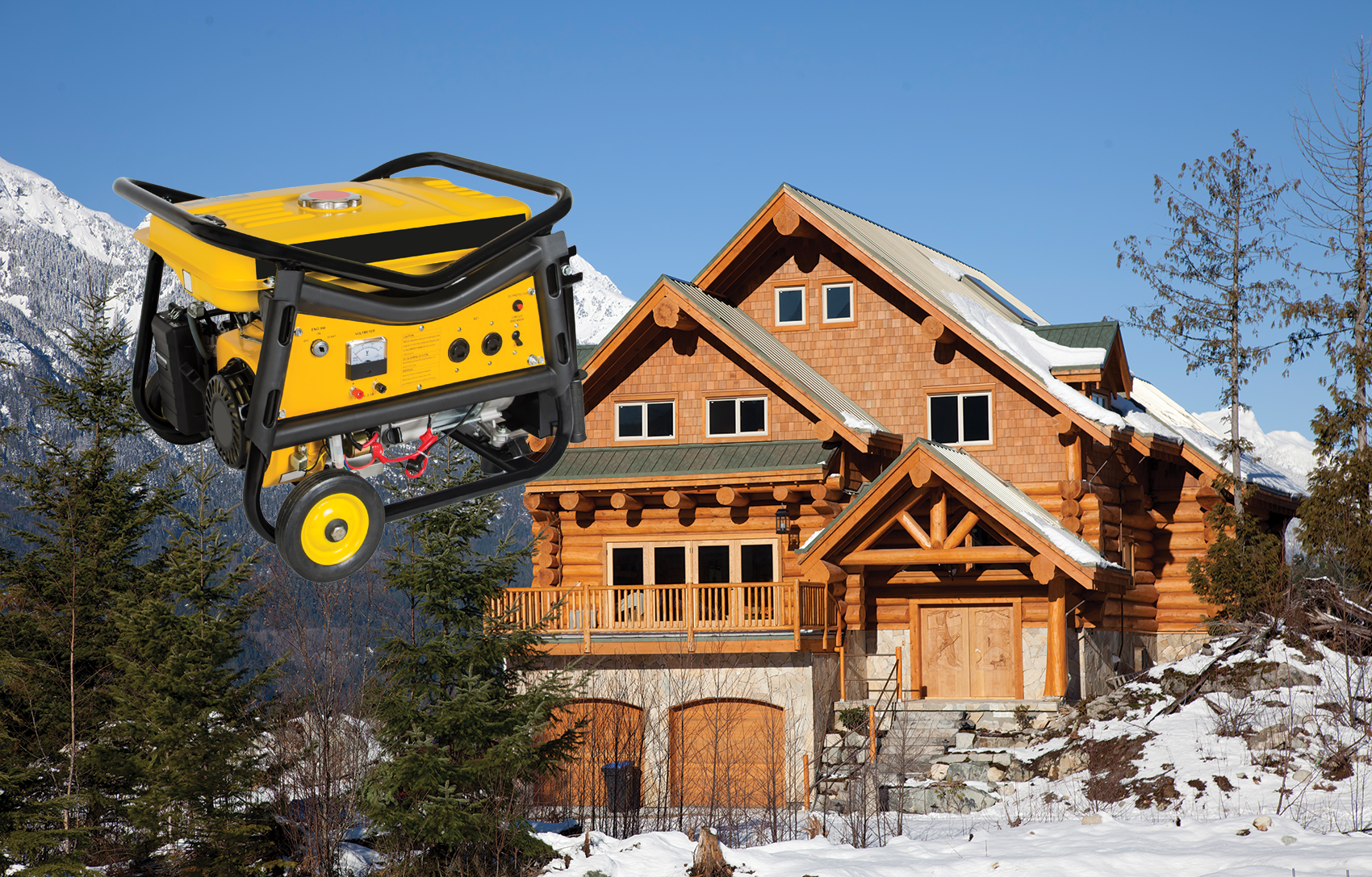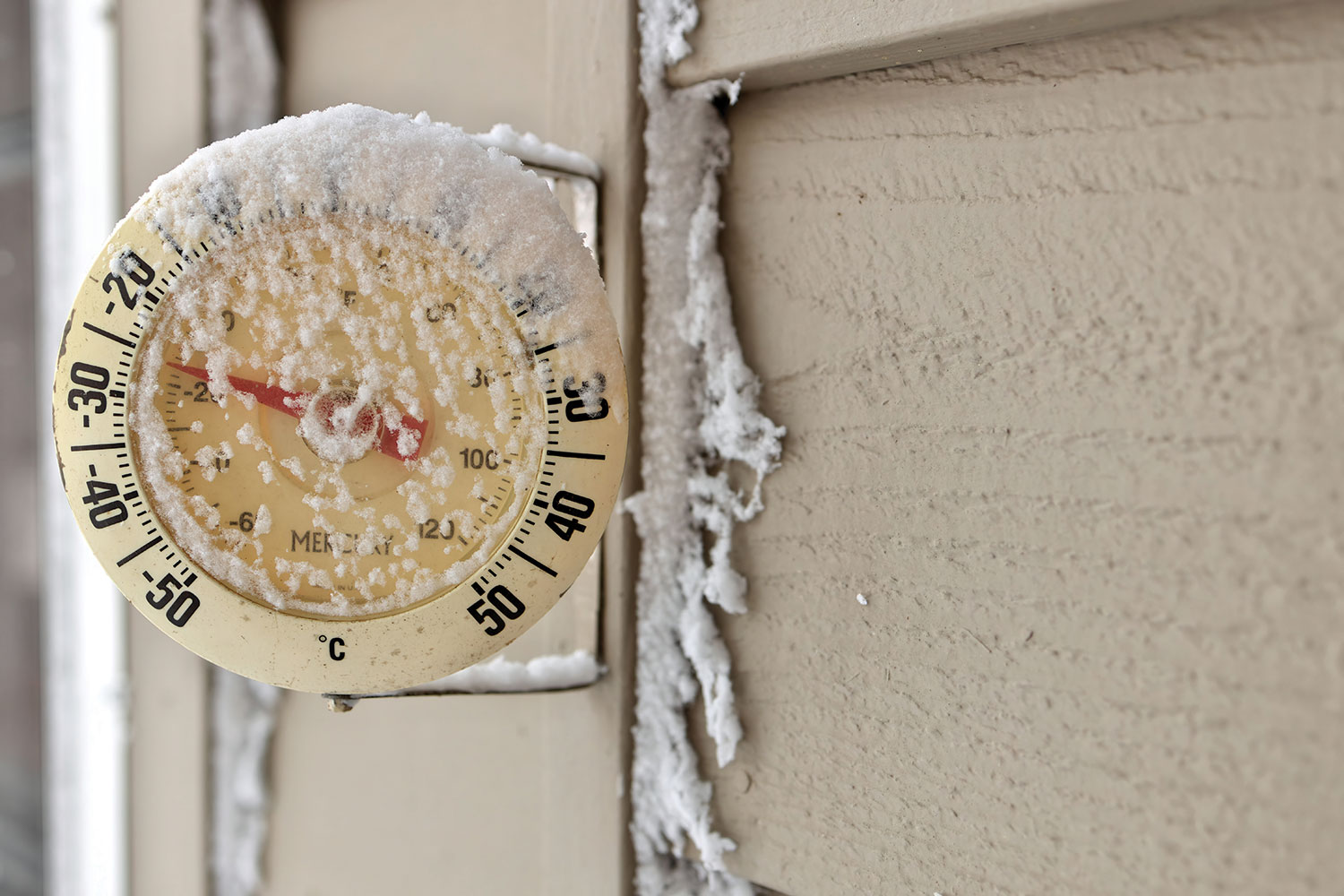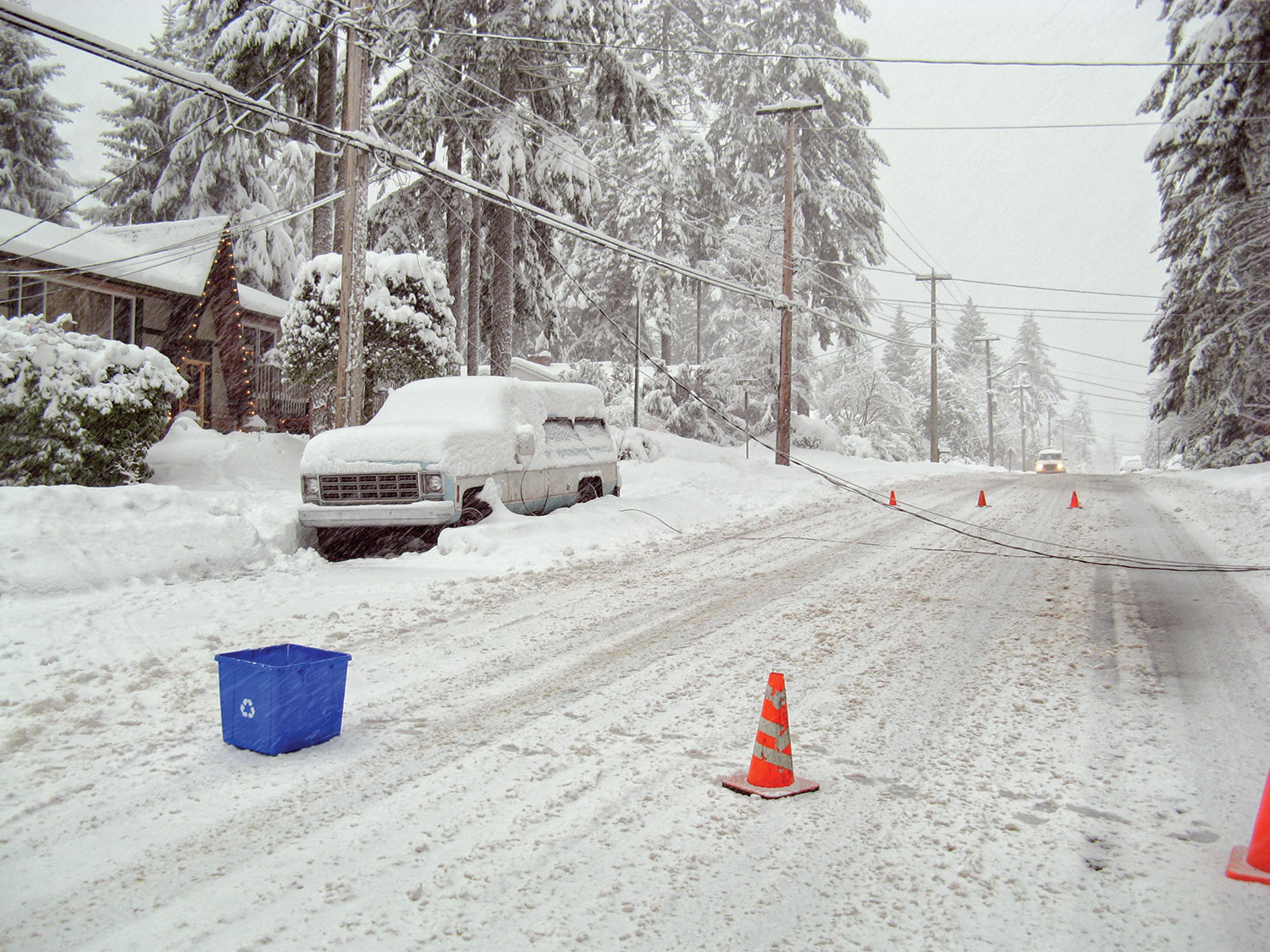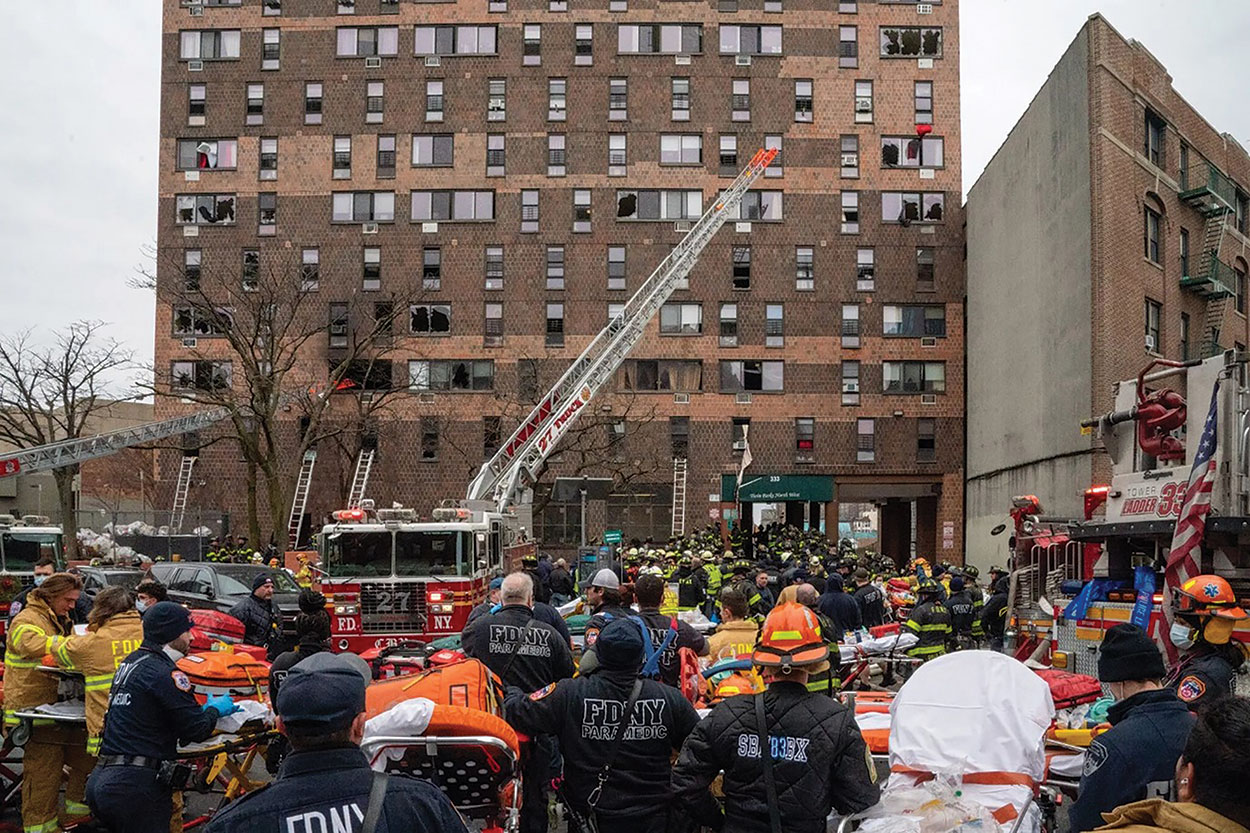Winter storms can bring deluges of ice and snow that often melt into spring floods. Power lines can be impacted by freezing rain in multiple ways: the weight of the ice can bring down power lines, tree branches snap and fall into the lines, and high winds cause the lines to sway. Damage to power lines begin when ice accumulations exceed a quarter of an inch; half an inch can add as much as 500 additional pounds to power lines. Strong winds can also cause lines to break or touch each other resulting in a power outage.
When power lines are down, residents can restore energy to their homes or other structures by using another power source such as a portable generator. There are several precautions to follow, however, to prevent electrical disaster. Here are a few quick tips:
- If water has been present anywhere near electrical circuits and electrical equipment, turn off the power at the main breaker or fuse on the service panel.
- Do not turn the power back on until electrical equipment has been inspected by a qualified electrician or electrical inspector.
- The generator should always be positioned outside the structure.
If it is necessary to use a portable generator, manufacturer recommendations and specifications must be strictly followed. If there are any questions regarding the operation or installation of the portable generator, a qualified electrician should be immediately contacted to assist in installation and start-up activities.
Avoiding Electrical Hazards
Utility power distribution lines can be inadvertently energized by backfeed electrical energy from the generators. Portable generators should never be cord and plug connected to the buildings branch circuits utilizing something like a cord with two male attachment ends. This helps to protect line workers or other repair workers or people in neighboring buildings from possible electrocution. The generator should provide power to individual devices or appliances through connection of properly-sized extension cords.
If the generator is plugged into a household circuit without turning the main breaker to the “off” position or removing the main fuse, the electrical current could reverse, go back through the circuit to the outside power grid, and energize power lines or electrical systems in other buildings to or near their original voltage without the knowledge of utility or other workers. The cord used to make this connection can become overloaded and overheat due to the various household loads connected to it, causing insulation failure and possible fire concerns.
It’s also important to have a transfer switch, which connects the generator to your circuit panel and lets you power hardwired appliances while avoiding the safety risks of using extension cords. By displaying wattage usage levels, most transfer switches also help to avoid overload. If a transfer switch is not installed, plug appliances directly to the generator and avoid using extension cords. If an extension cord must be used, it is best to use a heavy-duty one for outdoor use. It should be rated at least equal to the sum (in watts or amps) of the connected appliance loads.
Effects of Backfeed
The problem of backfeed in electrical energy is a potential risk for electrical energy workers. Electrocutions are the fifth leading cause of all reported occupational deaths. Following the safety guidelines below can reduce this risk.
Safeguards against Backfeed
Extreme caution must be exercised by persons working on or in the vicinity of unverified de-energized power lines. All persons performing this work should treat all power lines as energized or “hot” unless they positively know these lines are properly de-energized and grounded. Because of the possibility of a feedback circuit, the person performing the work should personally ground all lines on both sides of the work area and wear the proper required protective equipment.
Linemen must be instructed to treat all power lines as energized unless they de-energize them by establishing a visible open point between the load and supply sides of the line to be repaired by: opening a fused disconnect, opening a fused switch, or by removing a tap jumper if the load permits.
Workers must verify that the power lines have been de-energized.
Workers must provide proper grounding for the lines. Unless a power line is effectively grounded on both sides of a work area, it must be considered energized even though the line has been de-energized. Lines must be grounded to the system neutral. Grounds must be attached to the system neutral first and removed from the system neutral last. If work is being performed on a multiphase system, grounds must be placed on all lines. Lines should be grounded in sight of the working area, and work should be performed between the grounds whenever possible. If work is to be performed out of sight of the point where the line has been de-energized, an additional ground should be placed on all lines on the source side of the work area.
Persons working on or in the vicinity of power lines should be provided with appropriate safety and protective equipment and trained in procedures that address all magnitudes of voltages to which they may be exposed. Procedures should be established to perform a dual voltage check on the grounded load and supply sides of the open circuit. Once it has been determined that high voltage is not present, low-voltage testing equipment, such as a glowing neon light or a light-emitting diode, should be used to determine if lower voltage is present.
Other Generator Hazards
Generator use is also a major cause of carbon monoxide (CO) poisoning. According to data from the Consumer Product Safety Commission, 66 people a year die on average from carbon monoxide poisoning from improperly using a generator. Generators should only be used in well-ventilated areas. Gas and diesel generators should never to used indoors of the structure or installed in crawlspaces. The production of carbon monoxide will accumulate within the structure, causing possible death to the occupants.
After a storm has passed and utilities have restored power to the area, it is essential to disconnect items one at a time before shutting a generator down. Also, store any remaining fuel away from your home in approved storage containers in a ventilated area. Properly remove fuel from the tank of the generator or add a fuel stabilizer to prevent spoilage of the fuel between each use of the generator. Turning the fuel source to the “off” position and running the generator until the fuel is used within the generator will help with costly carburetor repair.
The Centers for Disease Control and Prevention (CDC) is a United States federal agency under the Department of Health and Human Services. CDC works 24/7 to protect America from health, safety and security threats, both foreign and in the U.S. Whether diseases start at home or abroad, are chronic or acute, curable or preventable, human error or deliberate attack, CDC fights disease and supports communities and citizens to do the same. For more information, visit cdc.gov.
Electrical Safety and Generators|Natural Disasters and …. https://www.cdc.gov/disasters/elecgenerators.html















Find Us on Socials